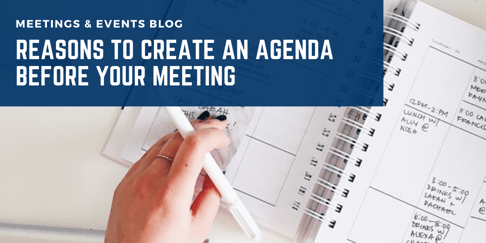
MeetingPackage
We have all been to meetings. We attend different kinds of meetings during the course of our lives. There are PTA meetings, office meetings, business meetings and even dates are a kind of meeting. According to research, the average employee spends approximately 5 hours per week on meetings.
We all know that meetings are important for businesses. Meetings are needed for exchanging ideas, imparting information, training, brainstorm sessions and of course for discussion. While webinars, teleconferences and video conferences are normal nowadays, communication is still faster and more efficient during face-to-face meetings.
Most of all, business is very competitive and meetings are an effective weapon. Regular personal interaction through meetings is a convenient and efficient means of communication. Negotiations are also more efficient during face-to-face meetings. Business deals and other details are covered more efficiently during this type of meetings.
Therefore, having an agenda during a meeting is important. You want to be able to tackle the most important parts quickly so you have maximum productivity. Without an agenda you might end up forgetting certain announcements or discussions might get waylaid due to a lack of course or direction.
If you think you can do away without a meeting for your agenda, think again. Here are some reasons why you should create an agenda before your meeting starts.
Reduce Wasted Time And Resources

One of the reasons why employees hate meetings is because they think it’s a waste of time. There are many people who feel that face to face meetings should be teleconferences or video calls instead. But as we know, face-to-face meetings are more efficient too. Creating an agenda is a good way to reduce waste of time and resources.
Agendas are a good way to steer meetings in the right direction. Meetings without an agenda are usually longer. This is because nobody really knows what the objective of the meeting is and tends to go off topic. An agenda will keep everybody in line so that all important points are addressed before the meeting ends.
Another result of having no agenda is that participants become disengaged. When current meetings are unfocused, it sets a precedent for future meetings making participants dread the next ones. This kind of feeling makes participants feel that the company does not value their time or effort.
If there is no agenda, time is wasted. Aside from this other valuable company resource such as electricity, office space and even snacks or coffee provided all go down the drain. Remember, meetings are for discussion of relevant topics and not a get together.
Speakers Can Prepare
Once there is an agenda, speakers and participants know what to prepare. For example, one of the speakers need to new ideas for marketing techniques for their product that is not performing well. This means the speaker needs to prepare metrics, relevant information and other details so that participants can understand why the meeting is being called.
In turn, participants know that the speaker will need ideas so they can prepare themselves by researching current trends which can possibly work with the product. This makes the meeting more efficient. Since speakers and participants are prepared, meetings can go smoothly and everybody present can feel that they are involved and have contributed in achieving the goals of the company.
Increased Participation and Productivity
You can think of agendas as meeting guides. When attendees understand all the items on the agenda and what needs to be discussed, they know what to expect, what actions are needed and who are responsible for what. If participants and speakers know what’s to be covered in the agenda, they know how to participate and react which in turn increases productivity.
But the purpose of an agenda does not stop at the current meeting. It can also be used in future meetings to measure results, keep track of progress and hold everybody accountable.
When attendees leave meetings, agendas can make them feel accomplished and productive because they are able to participate and contribute.
Documentation
Every time there is a meeting, somebody is always in charge of the minutes. You can think of minutes as the record of a meeting. It can be hard to record a meeting without direction because there are no clear topics or guides so discussion can flow in any direction, making it hard for the secretariat to follow.
Agendas on the other hand follow a clear path. What needs to be covered, who needs to speak including allotted time for every topic that needs to be discussed. This makes it easier to record and document a meeting.
Documentation is important. It is a black and white copy of what has transpired during a meeting. This is a record of what the meeting needs to achieve and can be used to measure what has been accomplished. This is because the person who is taking the minutes uses the agenda to take notes and then records the result of the discussion.
Documentation supports internal communication between co-workers. It is a written proof of contributions, actions, decisions and direction of the meeting.
Feedback

When you have prepared an agenda beforehand, participants can comment on the agenda and then give feedback to the meeting organizer as to the direction of the meeting. For example, they might want to include certain topics that are relevant and want to discuss. Feedback is very important because in this context it allows the meeting organizer to adjust the meeting accordingly.
For instance, one meeting participant might be concerned that one issue might not be addressed during the meeting. Letting the organizer know to add it on the agenda ensures that the topic will be discussed.
Based on this example, receiving feedback from attendees is important. Not only will it help ensure that all important topics are covered during a meeting, it also encourages participation from the attendees even during the formation stage of the meeting.
Let’s face it, meeting organizers are busy too and could fail to notice some important details that could be missing on the agenda they created. Submitting an agenda early for participants to review can help generate feedback on possible missing meeting points.
Time Allocation
All of us are busy at the office. We all have our duties and responsibilities that we need to attend to during our time there. Meetings are dreaded by many employees because they fear it’s waste of time which is better spent on doing actual work. One of the best ways to prevent time wastage is by creating an agenda with a set time for each section of the meeting.
For example, speaker A will take the floor for 15 minutes, speaker B for another 15 then a short 5 minute break. When session commences, the meeting can begin with a 15 minute Q&A for the attendees to address their concerns, then speaker A again for a 10 minute closing remark.
Having a set time for each portion of the meeting will prevent discussion from going astray. Going off-topic is very common and hard to prevent because meetings are dynamic and reactions of attendees differ. It is hard for meeting organizers to gauge reaction and questions from attendees so straying off the path is normal. However, a good meeting facilitator and a solid agenda will be able to keep topic on course.
Covers All Relevant Topics
Since everybody is now well prepared and have given their feedback to the organizer, the meeting can now proceed with all relevant topics set to be covered.
This is very important because all meetings have an objective. In order to achieve that goal, all relevant issues need to be covered by the meeting. Always remember that nobody wants to be in a meeting without purpose and nobody wants to attend a meeting that drags on.
Irrelevant topics, long meetings, talkative speakers and missing discussions can all be avoided if there is an agenda. A well designed agenda serves like a meeting program that covers all relevant and important topics that need to be discussed in good order and time.
It ensures that all topics are covered because it informs the participants and speakers the purpose of the meeting which in turn enables them to contribute accordingly.
Wrap Up
Once you have come up with an agenda send it to attendees 3-4 days before the meeting. Giving it ahead of schedule can give participants and speakers time to prepare. They can also use this time to suggest topics or issues that might have been forgotten. For bigger meetings, you should send the agenda months before the event.
Agendas can help turn boring meetings into impactful ones. It can also improve attendee experience. If they have a good time during the meeting, feel that they have learned something and contributed, they will start to like meetings and look forward to them. Most of all, a good agenda generates more productivity among attendees.
Great meetings are derived from necessity and this is what agendas should answer. Why are we having a meeting? The agenda serves as a team preparation tool before a meeting and a guide during the meeting.
You might want to check out also these blog posts:




